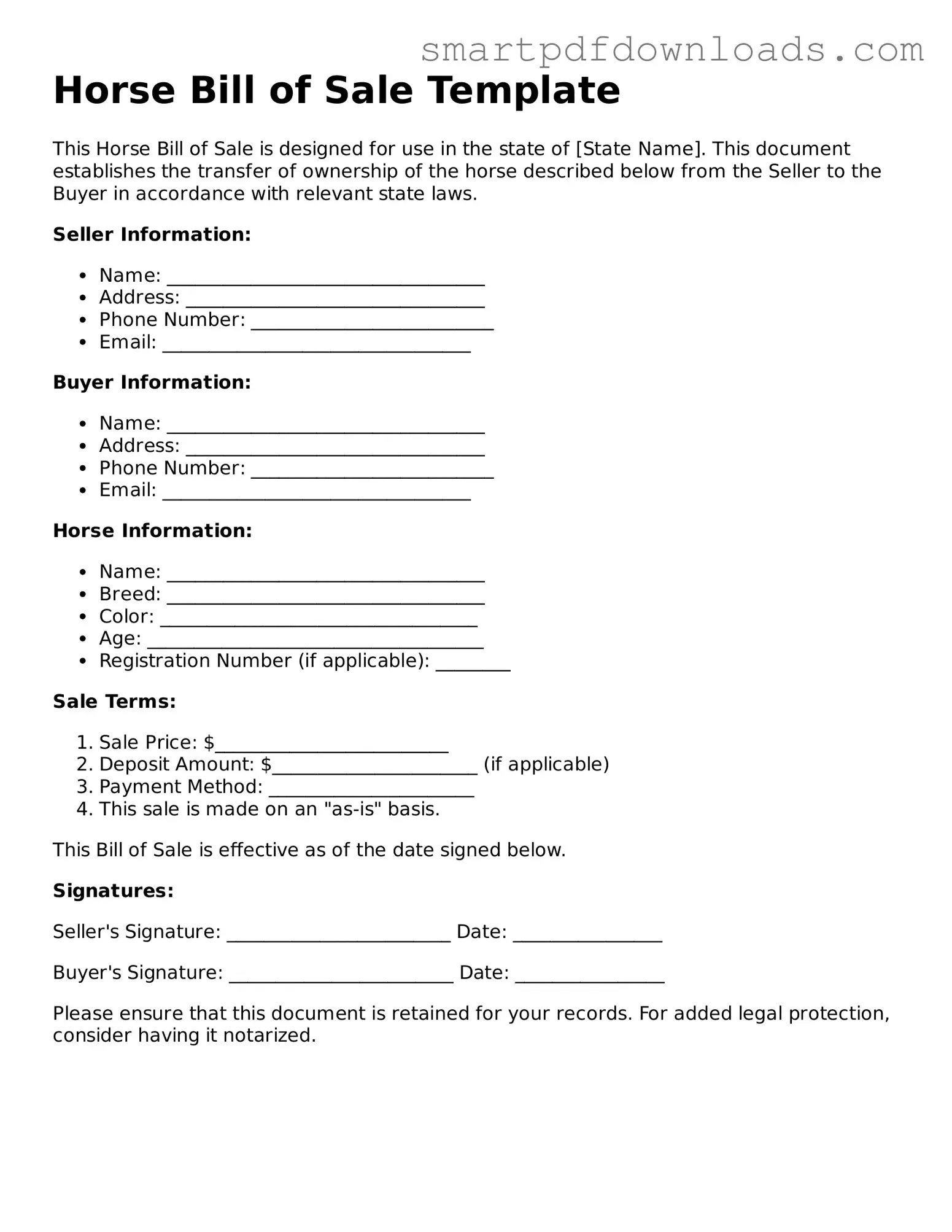Horse Bill of Sale Template
This Horse Bill of Sale is designed for use in the state of [State Name]. This document establishes the transfer of ownership of the horse described below from the Seller to the Buyer in accordance with relevant state laws.
Seller Information:
- Name: __________________________________
- Address: ________________________________
- Phone Number: __________________________
- Email: _________________________________
Buyer Information:
- Name: __________________________________
- Address: ________________________________
- Phone Number: __________________________
- Email: _________________________________
Horse Information:
- Name: __________________________________
- Breed: __________________________________
- Color: __________________________________
- Age: ____________________________________
- Registration Number (if applicable): ________
Sale Terms:
- Sale Price: $_________________________
- Deposit Amount: $______________________ (if applicable)
- Payment Method: ______________________
- This sale is made on an "as-is" basis.
This Bill of Sale is effective as of the date signed below.
Signatures:
Seller's Signature: ________________________ Date: ________________
Buyer's Signature: ________________________ Date: ________________
Please ensure that this document is retained for your records. For added legal protection, consider having it notarized.
